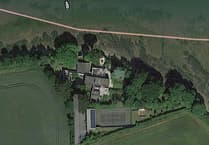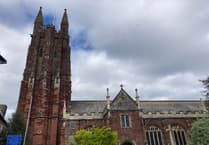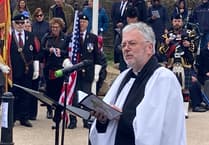Internationally renowned artist Bruce Munro has carved a niche for himself in the world of art with his immersive light displays.
Arranged in complex patterns, mostly in open fields, his work has graced almost every corner of the globe, from the Australian desert to Californian vineyards.
His next Field of Light display will be in Salcombe, a town that holds special significance for the 64-year-old English-born artist, who has dual Australian-British nationality.
“There is a bench in the gardens below Cliff House that my brother, sister and I dedicated to my dear old dad (Brian). He was a lovely man and a friend of Salcombe. It looks out at the fields of the installation, so I am chuffed to know that his spirit will get to see the Field of Light at long last,” he said.
It was Salcombe that kindled Mr Munro’s love of art, and he started painting pictures from the tender age of seven while holidaying in the town, a family tradition stretching back two generations.
From October 5 to January 10 next year, 20,000 fibre optic cables, illuminated by 100 x 25 Watt projectors, will be used to light up three fields by the water’s edge facing the town, switching on from dusk until 10pm each day in celebration of the RNLI’s 200th year.
The scale of the undertaking is not lost on him.
“I just do the daft idea and they go and do it! But if you think about it, anything we do in life is connected to everybody else,” he told this paper.
It was while travelling with his family around Australia in 1992 that his life changed forever. During a stop over, he was awe-struck at the sight of the legendary Uluru monolith (also known as Ayers Rock).
“It sounds a bit hippy-dippy, but there was a lot of energy – I felt really alive. Rather than get paints and brushes out, I was working in my mind how I could express that feeling that the landscape gave me.”
It heralded the start of a new journey as an artist, although it took him 10 years to put shape to the dream. In 2003 he opened his first light exhibition in Harvey Nicholls in London before displaying it at the V&A museum, but it was only afterwards, when the lights were packed away back in his shed, that he experienced a ‘eureka moment’.
“I thought ‘I’ve got to get this out in our field’.”
He went ahead with a 15,000-light display, and if he ever had any doubt about the wisdom of switching over to lights, it was dispelled by a chance encounter with a woman.
“A lady brought a friend of hers who was not very well. It turned out that she was dying of cancer. She came up to me and grabbed my hand, burst into tears and said ‘thank you’. I had never done a piece of art that had that kind of effect before – I realised that this is what I should be doing,” he said.
Since then, the light designs have become ever more ambitious, but the intimate nature of his displays - “connecting people with each other” - remain at the core of his work.
He is hoping the forthcoming Salcombe display will also provide an opportunity for him to show his admiration for the local RNLI.
“I worked for one of the crew – he had a restaurant here – and when you live in the town you realise how important the RNLI is. Even today, with all the equipment, they’re still nuts to go out when you see a rough sea.”
By contrast, he bemoans the lack of interest shown in the Arts in the UK.
“It’s the first thing to go when there’s a cut in funding, but it’s an essential part of our lives. It does play a really important part in our culture,” he said.
Later this year, he will be selling two pieces of artwork at the Velarde Gallery in Kingsbridge to raise further funds for the RNLI as well as a breast cancer charity in memory of a friend, Jenny Moore, who died of the disease two years ago.
“Creating art has a many benefits. Most importantly, it is a constant reminder that we are in this short life together.”



